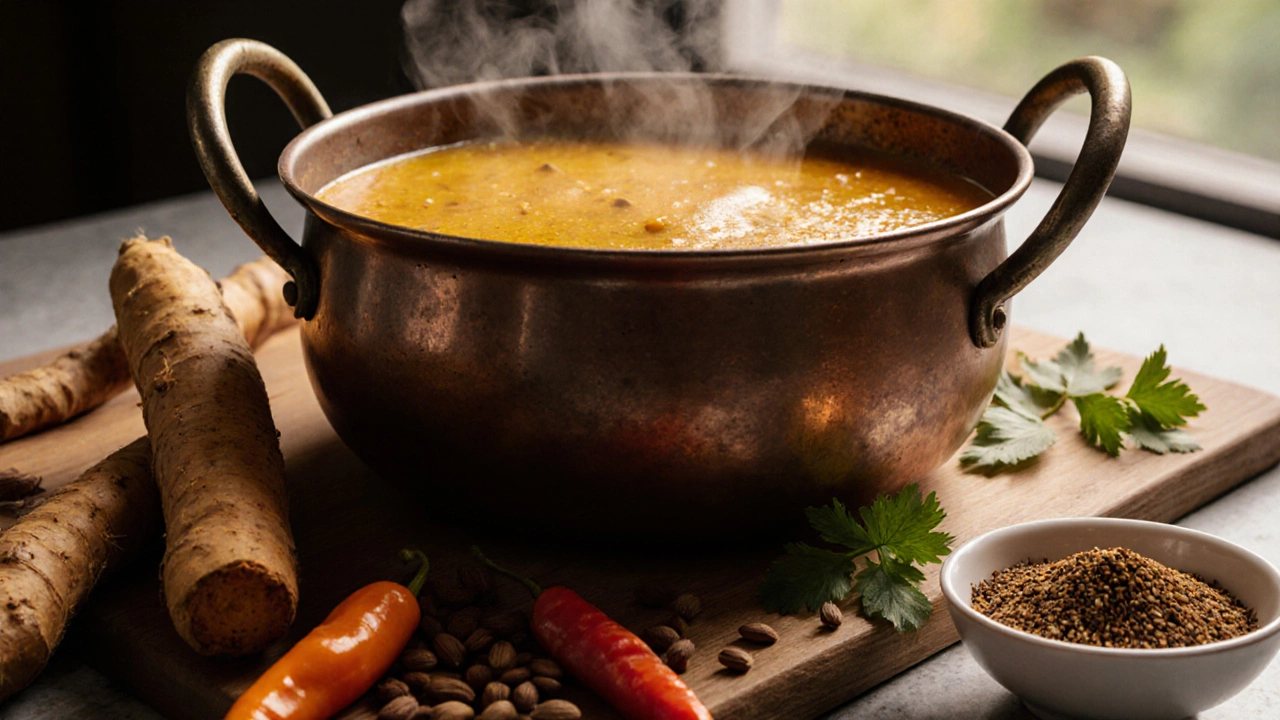Spice Blend: The Heart of Indian Cooking
When you dive into Indian food, the first thing that sets each dish apart is the Spice Blend, a mixture of ground spices crafted to give a dish its signature flavor profile. Also known as masala, a spice blend can be as simple as a two‑spice combo or as complex as a dozen‑ingredient mix. It’s the backbone of everything from street‑side pani puri to a royal biryani. Mastering the spice blend basics means you can instantly upgrade a plain lentil dal or a quick stir‑fry into something that tastes homemade and authentic.
Key Players: Masala, Curry, and Tandoori Spice
One of the most common related entities is Masala, a blend that often includes cumin, coriander, cardamom, and pepper. Masala is a broad term, but in practice it drives the flavor of dishes like tikka masala and biryani masala. Another core entity is Curry, a sauce‑based preparation that relies on a balanced spice blend to achieve depth and aroma. Curry blends usually add turmeric for color, fenugreek for bitterness, and mustard seeds for heat. Then there’s Tandoori Spice, a smoky, red‑pepper‑heavy mix used to marinate meats before grilling in a tandoor. Each of these entities “requires fresh, high‑quality ingredients” and “influences the final taste” of the dishes they touch.
Regional variations turn the generic idea of a spice blend into something uniquely local. In South India, sambar powder brings lentils, dried red chilies, and curry leaves together, creating a tangy base for vegetable stews. Up north, garam masala adds cloves, cinnamon, and nutmeg, giving biryani its warm, aromatic lift. When you compare tikka masala to a simple tandoori spice, the former includes creamy tomato notes while the latter leans on smoky char. Even chutney mixes follow the same pattern: a pinch of mustard seeds, a dash of dried mango powder, and a splash of coconut shavings can turn raw ingredients into a condiment that “cancels bitter taste” and adds a burst of freshness.
Beyond taste, spice blends play a surprisingly health‑focused role. A well‑balanced masala can lower the glycemic impact of a curry, making it friendlier for diabetics—a point highlighted in our article about tandoori chicken for diabetes. Weight‑loss‑friendly curries often swap heavy cream for yogurt and rely on spice blends rich in capsaicin, which can boost metabolism. The same principles apply to “healthy junk food” swaps: using a bold biryani spice mix instead of excessive salt lets you enjoy indulgent flavors without the sodium overload. In short, a thoughtful spice blend “enables healthier cooking” while preserving the excitement of Indian street food or festive sweets.
Below you’ll find a hand‑picked collection of articles that explore these ideas in depth. From the science of why tikka sauce differs from tandoori sauce, to the cultural reasons behind India’s low meat consumption, to practical guides on cooking chutney with the lid on or off, each piece shows how a single spice blend can transform a recipe. Browse the list to discover new blends, cooking tricks, and health tips that will level up every meal you create.
Turmeric in Curry: Is It the Main Spice?
Discover if turmeric truly leads the spice list in curry, its role, typical spice ratios, regional twists, and a quick guide to building balanced curry blends.
